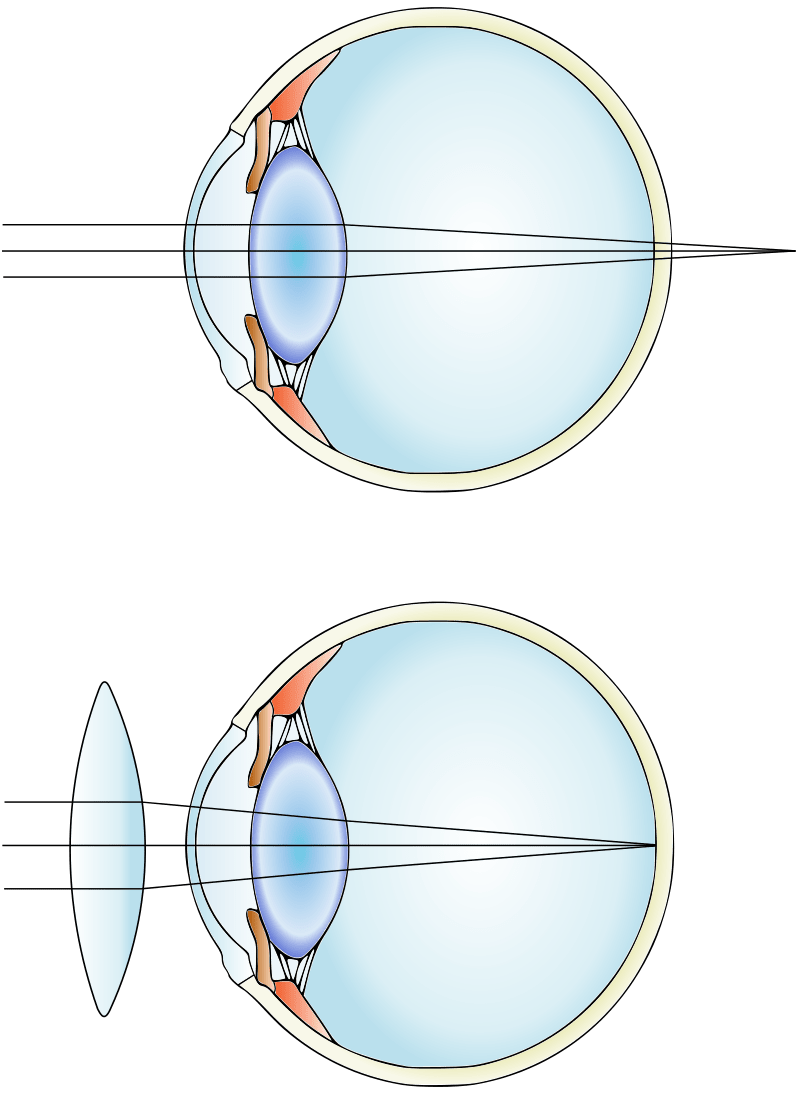What is the Difference Between Hypermetropia and Myopia
Table of Contents
The key difference between hypermetropia and myopia is that hypermetropia is a medical condition affecting the eye that makes it hard to see things that are close, while myopia is a medical condition affecting the eye that makes it hard to see things that are far away.
Both the distance and near vision should be clear for proper vision. Hypermetropia (farsightedness) and myopia (nearsightedness) are two medical conditions that affect the eyes. Both hyperopia and myopia are refractive conditions. This is because they refer to how light is focused in relation to the eye. Moreover, both these conditions can be improved through corrective glasses or contacts and LASIK surgery.
CONTENTS
1. Overview and Key Difference
2. What is Hypermetropia
3. What is Myopia
4. Similarities – Hypermetropia and Myopia
5. Hypermetropia vs Myopia in Tabular Form
6. Summary – Hypermetropia vs Myopia
What is Hypermetropia?
Hypermetropia (farsightedness) is a medical condition affecting the eye that makes it hard to see things that are close. This medical condition occurs when people see things that are far away better than things that are up close. Therefore, people suffering from hypermetropia focus better on distant objects than on nearby ones. Children who have mild to moderate hypermetropia can see both close and far away things without glasses. This is because the muscles and lenses in their eyes can squint very well and overcome the hypermetropia condition. Hypermetropia is caused by the eye being too short or the optical components of the eye not being strong enough.

Figure 01: Hypermetropia
The symptoms of hypermetropia may include trouble focusing on nearby objects, headaches, blurry vision, eye strain, and fatigue or headache after a close-up task such as reading. Hypermetropia can be diagnosed by a basic eye exam, which includes a refraction assessment and an eye health exam. Furthermore, this condition can be treated through prescription lenses (eyeglasses, contact lenses) and refractive surgery laser-assisted in situ keratomileusis (LASIK), laser-assisted subepithelial keratectomy (LASEK), photorefractive keratectomy (PRK), lifestyle and home remedies (regularly eye check, protect eyes from the sun, prevent eye injuries, eat healthy foods, use right corrective lenses, use good lighting, reduce eye strain).
What is Myopia?
Myopia (nearsightedness) is a medical condition affecting the eye that makes it hard to see things that are far away. It is a very common vision disorder that is normally diagnosed before the age of 20. Myopia affects distance vision. In this condition, people can see close-by objects well but have trouble viewing objects that are far away, such as grocery store aisle markers or road signs. Myopia condition is now on the rise. Myopia is caused when the eyeball is too long or the cornea, the protective outer layer of the eye, is too curved.

Figure 02: Myopia
The symptoms of this condition may include headaches, squinting, eye strain, and eye fatigue when people try to see objects more than a few feet away. Children with myopia often have trouble reading the blackboard at school. Moreover, myopia can be diagnosed by a basic eye exam, which includes a refraction assessment and an eye health exam. Furthermore, myopia is treated through eyeglasses, contact lenses, laser-assisted in situ keratomileusis (LASIK), laser-assisted subepithelial keratectomy (LASEK) and photorefractive keratectomy (PRK), medicines like topical atropine, dual-focus contact lens, orthokeratology (wearing rigid gas permeable contact lenses for several hours), and increased time out.
What are the Similarities Between Hypermetropia and Myopia?
- Hypermetropia and myopia are two medical conditions that are affecting eyes.
- They are refractive conditions (refractive errors).
- They are based on how light is focused in relation to the eye.
- Both have similar diagnosis schemes, such as eye exams.
- These conditions can be improved through corrective glasses or contacts and LASIK surgery.
What is the Difference Between Hypermetropia and Myopia?
Hypermetropia is a medical condition of the eye that makes it hard to see things that are close, while myopia is a medical condition of the eye that makes it hard to see things that are far away. Thus, this is the key difference between hypermetropia and myopia. Furthermore, hypermetropia is caused by the eye being too short or the optical components of the eye being not strong enough. On the other hand, myopia is caused when the eyeball is too long, or the cornea of the eye is too curved.
The below infographic presents the differences between hypermetropia and myopia in tabular form for side by side comparison.
Summary – Hypermetropia vs Myopia
Hypermetropia and myopia are two medical conditions that are due to refractive errors of the eyes. Hypermetropia makes it hard to see things that are close. Myopia makes it hard to see things that are far away. So, this is the key difference between hypermetropia and myopia.
Reference:
1. “Farsightedness.” Mayo Clinic, Mayo Foundation for Medical Education and Research, 16 June 2020.
2. “Nearsightedness.” Mayo Clinic, Mayo Foundation for Medical Education and Research, 2 Apr. 2020.
Image Courtesy:
1. “Hypermetropia color” By Гуменюк И.С. – Own work (CC BY-SA 4.0) via Commons Wikimedia
2. “Myopia” By National Eye Institute – (Public Domain) via Commons Wikimedia
ncG1vNJzZmivp6x7pbXFn5yrnZ6YsqOx07CcnqZemLyue9ahmK1lmah6tbTEZpuinpaav6a6wp5km52krLKmuoyhsKmdoqKytb7OqaCaZZGjsW652Kinoplf